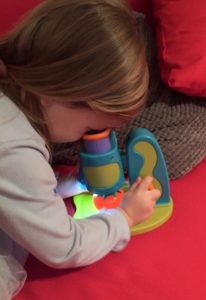7th March 2017 Science Innovation USA
Science Belongs to Humanity…Or Does It?
A Guest Blog by the Women of the Science and Innovation Network
Science knows no country because knowledge belongs to humanity and it is the torch that illuminates the world- Louis Pasteur
This beautiful quote sums up why networks like HMG’s Science and Innovation Network (SIN) are so important, and why collaborating on science and innovation across borders can make such a huge impact in the big issues facing our world like AMR, climate change and the future of our oceans.
The first half of this quote is summed up the world over, with demonstrations everywhere of collaborations across boarders some of which are highlighted through the work of SIN. The second half of this quote, I would argue, isn’t quite true in a society where globally women account for less than a third of those employed in scientific Research and Development. So although knowledge may belong to humanity, for a variety of reasons ranging from societal pressures, to workplace attitudes even in the 21st century women sadly don’t have the same access to the ‘torch that illuminates the world’ that men do. And although the statics are heading in the right direction with increases year on year in the STEM work force it doesn’t feel like these changes are happening quickly enough….
Below, some women from the Science and Innovation Network reflect on this and what they think needs the challenges are…
Kat Bodkin, SIN Officer in Toronto, Canada:
In Canada it may seem like women have the same access to this ‘torch that illuminates the world.’ After all, there are many programs springing up that encourage girls and women to enter careers in STEM. However, the reality is that women account for only about 22% of the STEM workforce.
This low percentage can make attending industry events as a female SIN Officer rather intimidating at times. I am normally a very confident person, but my skin starts to crawl when I enter a conference and sit at a table where 9 out of 10 are men. I can’t help it! I find myself wondering things like: Do these men think I am capable of having an intelligent conversation about their research or business? Do they think I have any value to add to their networking? And even though I dress professionally I find myself wondering: am I sending the wrong messages with how I look? Though not always, I often find that men will gravitate towards each other in search for the most beneficial networking interactions.
This leads me to some advice for men working in the STEM field: When you attend industry events that have a disproportionate amount of men, make an effort to have an engaging conversation with the women who are there as well. Make them feel like a valued participant in the professional networking event that you are both attending. We don’t generally think of this when we think of how to support women working in STEM, but making this conscious effort could make a world of difference.
And my advice for fellow women working in STEM fields: recognize these feelings of discomfort when they occur, and embrace them! A saying I live by is that the magic happens when you step outside of your comfort zone. So if you’re feeling slightly uncomfortable, you’re well on your way to the ‘magic’!

Push yourself to keep going to these types of events, and be bold to talk to everyone you come across in a professional and confident manner. Demonstrate to everyone the depth of your STEM expertise. This will help you reach new levels in your networking efforts, and ultimately your career.
I feel very fortunate to work for SIN, as over half of our Officers around the world are women. The role has provided me and women in countries around the world with an awesome opportunity to lead various STEM projects, and I look forward to using this role to inspire other women to be confident enough to rule this world and the magic in can bring!
Emily Hamblin, based in Paris, Regional Director, West Europe, SIN:
I was lucky enough to attend the L’Oreal Foundation Women in Science awards here in Paris last March. Before an audience of 700 experts and opinion leaders, 5 leading scientists and 15 promising young researchers from around the world were honoured for their achievements, showcasing the way in which women are contributing to ground-breaking science, from the detection of Higgs Boson (the particle responsible for the creation of mass in the universe), to the development of biomaterial to regenerate damaged nerve tissue.
Working within the SIN network where over half of our officers are women, it was no surprise to me that excellent scientists who happen to be women are having such an impact. But I think it’s important to celebrate these outstanding contributions, and to showcase these role models to the next generation of aspiring young women.
Across advanced countries over the past decade we have seen a +12% increase in the share of women in research – a move from 26% to 29% of researchers being women. But parity is still far from being reached – a problem that is most acute at the top of the profession (only 3.5% of Nobel prize winners are women) and in certain areas of science (health-related research does better than e.g. engineering).
And yet science needs women – science holds the key to addressing many of the major challenges we face, and we are more likely to find better solutions faster if we are making full use of all of the talent and creative energy available across both genders.
So all over the world we need to be encouraging girls to choose STEM subjects – by providing them with inspiring role models, stimulating their interest, and instilling them with confidence in their own potential. And we also need to support women in research, and importantly to continue to recognise excellence in a field where women are underrepresented.
Catharine Young, Head of Washington, DC SIN team:
Nothing thrills me more than watching my 3-year-old daughter interact with the world around her. She doesn’t know it, but she is a bona fide scientist – she makes observations, test hypotheses and comes to conclusions (sometimes rapidly) based on the results. Her curiosity of how the world works is insatiable, but according to statistics, the risk of her losing this innate interest is enormous.
Although boys and girls show equal interest in STEM subjects until middle school, girls interest starts to fade. In fact, studies have shown that by 15 she will most likely have lost interest in STEM all together. Why? Because she will be bombarded with pressure to conform to society expectations – wrapped in typical gender stereotypes and roles.
The question becomes, what can we do to overcome this? Building confidence and creating opportunities to foster creativity and critical thinking skills is imperative at a young age. Exposure to role models and serving as STEM cheerleader’s is another avenue we can increase interest – it always gives me great comfort to think of all the women in the SIN network who are dedicated to science and innovation that can help fulfil this role.
Take Ada Lovelace for example, the gifted mathematician who is thought to have written instructions for the first computer programme back in the 1800s. It was in fact her mother who encouraged her to pursue math and science – a powerful example of just how impactful our influence can be.
The unfortunate reality is that our girls will face many barriers throughout their entire lives regarding STEM. But as parents, we are perfectly poised to nurture and encourage our children’s hardwired scientific interests from the start of their journey. Who knows…in doing so it may spark our own STEM interests that we may have lost along the way.

